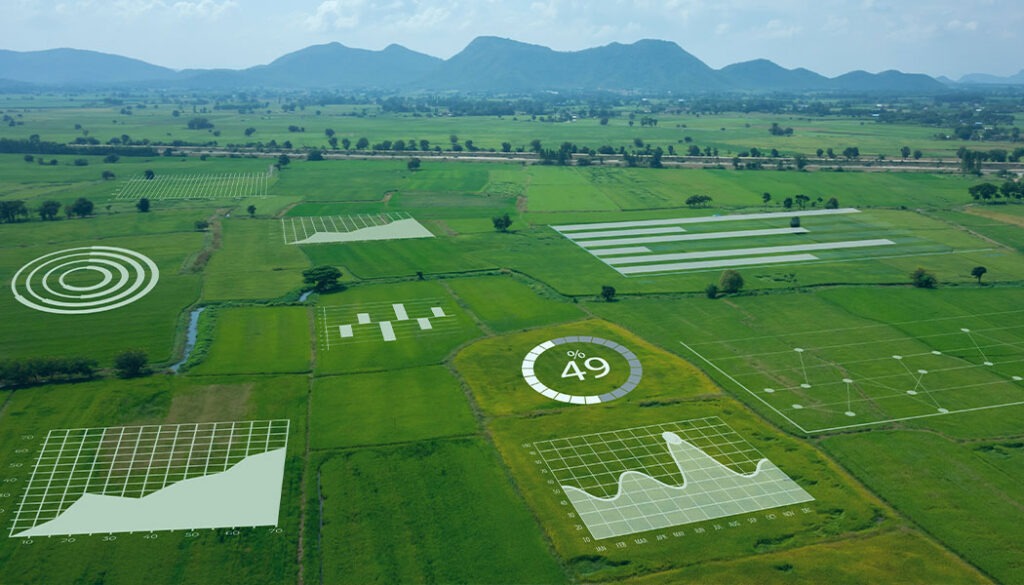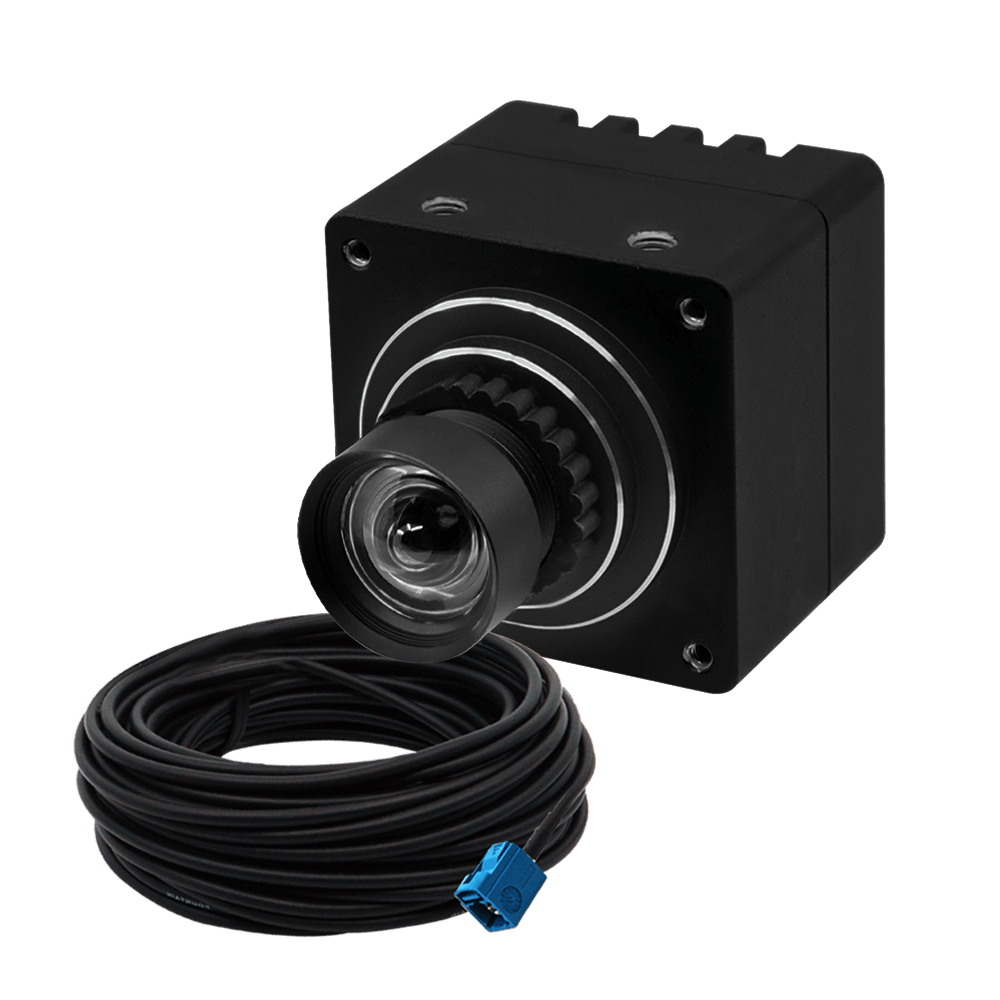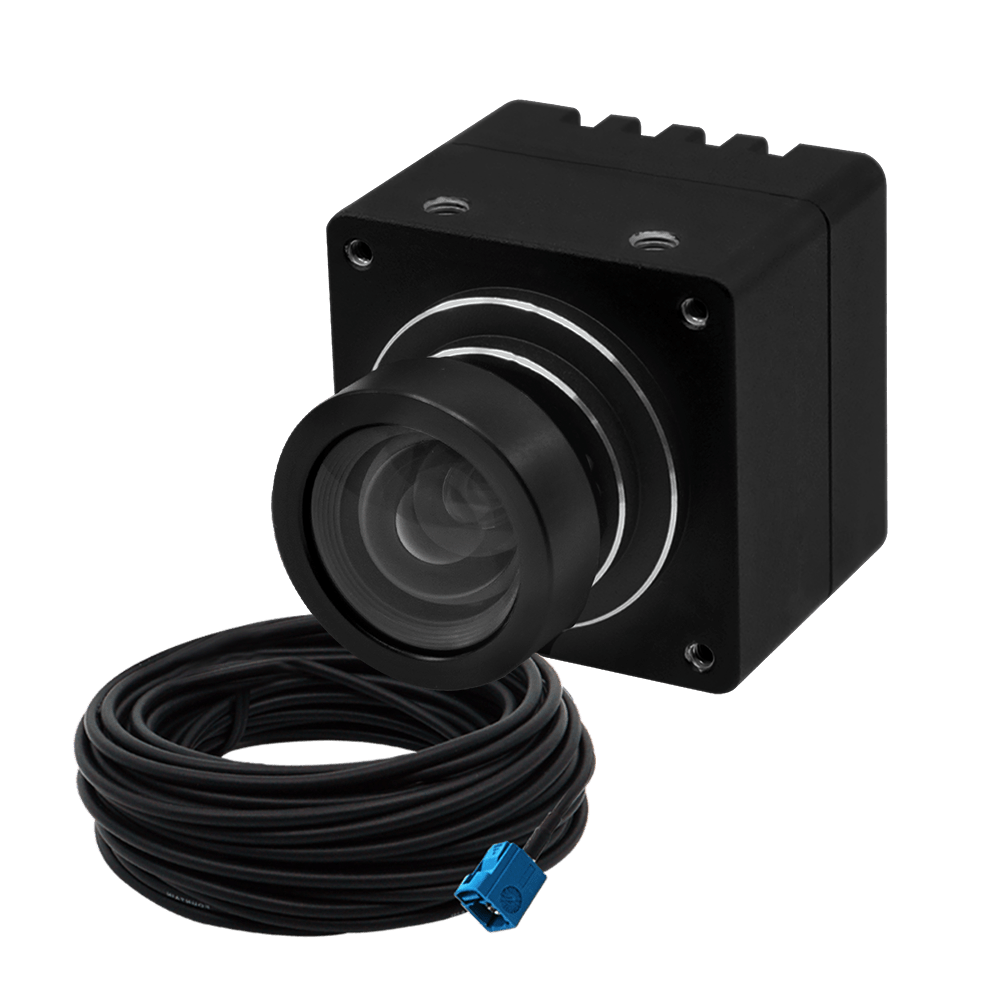When we think of agriculture, images of vast fields stretching to the horizon come to our mind. We imagine farmers toiling under the sun, their hands deeply rooted in the soil, cultivating the lifeblood of our sustenance. At most, we imagine them driving a tractor or harvester, which greatly enhances their productivity.
However, in this age of technology, this manual labor-dependent industry is undergoing a massive transformation drastic change. Amidst the furrows and rows, a new player has emerged, which has greatly reduced the need for human intervention. We are talking about Autonomous Mobile Robots.
These robotic marvels, equipped with vision capabilities, are poised to revolutionize the very essence of farming. From monitoring plant health and detecting pests to optimizing irrigation and harvesting, these robots can carry out a plethora of tasks with unparalleled efficiency and precision.
This article discusses types of agricultural robots, the role of cameras in them, and the key features required for camera modules used in agricultural robots.

An agricultural robot in action
Types of Robots Used in Agriculture and the Role of Cameras in Them
Each type of robot plays a crucial role in enhancing productivity. Moreover, the integration of cameras within these robotic systems enables them to perform tasks with precision and intelligence. The autonomous mobile robots used in agriculture include:
Automated Weeders
These robots are designed to combat the persistent challenge of weed infestation plaguing agriculture worldwide. The integrated cameras in these automated weeders capture images of the plants and crops.
These images are then processed and analyzed by computer vision algorithms to detect weed or bug infestation in the vegetation based on their color, shape, and size. This data empowers robots and tractors to accurately target and eliminate weeds or pests and administer fertilizers, minimizing reliance on chemical procedures and safeguarding crop health.

A harvesting robot
Harvesting Robots
Another vital application of autonomous mobile robots in agriculture lies in automated harvesting – particularly for vegetables and fruits. Harvesting robots outfitted with sophisticated cameras and advanced vision algorithms play a pivotal role in this area by assessing the ripeness of crops.
The cameras capture detailed images and videos of the fruits and vegetables from multiple angles. The algorithms then analyze these images to determine their ripeness based on the color, texture, and other visual cues. This helps ascertain the optimal time for harvesting which not only enhances efficiency but also minimizes waste by avoiding premature or overripe harvests.
Another vital application of autonomous mobile robots in agriculture lies in automated harvesting – particularly for vegetables and fruits. Harvesting robots outfitted with sophisticated cameras and advanced vision algorithms play a pivotal role in this area by assessing the ripeness of crops.
The cameras capture detailed images and videos of the fruits and vegetables from multiple angles. The algorithms then analyze these images to determine their ripeness based on the color, texture, and other visual cues. This helps ascertain the optimal time for harvesting which not only enhances efficiency but also minimizes waste by avoiding premature or overripe harvests.
Plowing Robots
Plowing robots offer an autonomous mechanized solution for soil preparation and fertilizer distribution. Utilizing a blend of RGB and 3D cameras, these robots capture vital data on soil conditions, as well as precise location and depth information.
Subsequently, sophisticated vision algorithms analyze the captured images, facilitating automated plowing processes. This integration of advanced technology streamlines agricultural operations, ensuring efficient and accurate soil cultivation while minimizing manual intervention.
Soil Analyzers
Soil analyzers exemplify the convergence of robotics and embedded vision technology in agriculture. The cameras capture images of the soil surface, which are then processed by AI and ML-based algorithms to assess various parameters such as moisture content, nutrient levels, and soil texture.
This real-time data enables farmers to make informed decisions regarding crop selection, fertilization strategies, and irrigation management. This results in enhanced agricultural productivity and sustainability.
Benefits of Using Robots in Agriculture
So, with autonomous mobile robots finding their place in several agricultural processes, there comes a plethora of benefits. These include:
Faster Production and High Agricultural Yield
Robots significantly enhance production speed and agricultural yield. With their ability to work tirelessly and efficiently, robots help automate and streamline farming processes – from seed planting and irrigation to fertilization and harvesting. This leads to an overall increased output and improved crop quality.
Reduced Labor Costs
A significant advantage of employing robots for agricultural tasks is the reduction in labor costs. Labor cost is one of the biggest expenses when it comes to agriculture. Robots replace manual labor with autonomous machinery which helps farmers reduce their dependency on human workers. This not only helps cut down on labor expenses but also helps mitigate the impact of labor shortages.
Continuous Operation
Robots offer the advantage of continuous operation, regardless of adverse weather conditions or time constraints. Unlike human laborers who may be limited by factors such as fatigue or working hours, robots can work around the clock, ensuring uninterrupted farming operations and timely completion of tasks.
Better Data Collection and Analytics
Equipped with advanced cameras and sophisticated vision algorithms, the robots gather real-time data on crop health, soil conditions, environmental factors, and other parameters. The data is then analyzed to provide valuable insights that enable farmers to make informed decisions regarding crop management strategies, resource allocation, and yield optimization, among others.
Elimination of Human Errors
Programmed to execute tasks with the utmost precision and accuracy. Also known as precision farming, These robots eliminate human errors commonly associated with manual farming practices. From plant spacing to pesticide application, and beyond, robots ensure uniformity and consistency. This eventually leads to improved crop health and reduced wastage.

Precise Use of Resources
These robots also enable the precise use of water, fertilizer, pesticides, and other agricultural inputs, contributing to resource conservation. Moreover, robots minimize chemical inputs and reduce the risk of overuse or pollution by employing targeted application techniques based on data-driven insights, promoting eco-friendly agricultural practices.
Key Features Required for Cameras Used in Agricultural Robots
When selecting cameras for agricultural robots, several key features are essential to ensure optimal performance in varying conditions and specific tasks. The exact requirements may vary depending on the application. But the following features are commonly sought after:
High Resolution
High-resolution cameras are essential for capturing detailed images of crops, soil conditions, and pests. Higher resolution allows for clearer visualization of small details, enabling vision algorithms to carry out more accurate analysis, such as identifying crop health issues or detecting weeds.
High Dynamic Range
Agricultural environments often experience varying lighting conditions, from bright sunlight to dull overcast conditions. HDR cameras are capable of capturing images with a wide range of brightness levels, ensuring that details are preserved in both well-lit and shadowed areas. This feature is particularly important for accurate image interpretation and analysis.
Global Shutter
In scenarios where fast-moving objects need to be captured without motion blur, such as when imaging crops from a moving robot, cameras with global shutter functionality are essential. A global shutter in a camera ensures that all pixels are exposed simultaneously. This prevents distortion and ensures that the images are clear and sharp, even in high-speed applications. Read more about the differences between rolling shutter and global shutter here.
Multi-camera Support
Agricultural robots often require a comprehensive view of their surroundings to navigate fields, monitor crops, and perform tasks accurately. A multi-camera system allows robots to capture images from multiple perspectives. This provides complete coverage and enables a more comprehensive analysis of the agricultural environment.
Also read: Multi-Camera Systems in Embedded Vision: Features and Applications
High-quality ISP
An advanced Image Signal Processor (ISP) is crucial for processing raw image data and enhancing image quality. A high-quality ISP ensures accurate color reproduction, noise reduction, and image enhancement. This results in clearer and more informative images for better analysis and decision-making purposes.
Near-IR Sensitivity
Near-infrared (NIR) sensitivity enables cameras to capture light beyond the visible spectrum, providing valuable information for agricultural analysis. It becomes especially crucial in agricultural applications where certain indicators of crop health and pest infestations are better detected in the NIR spectrum. This early detection enables targeted intervention strategies, such as precision pesticide application. This helps minimize crop damage and yield losses.
Long-distance Transmission
In some agricultural robotics applications, cameras may need to be positioned several meters away from the processor or control unit. A harvesting robot with long arms is a great example of this. In such scenarios, long-distance transmission capabilities, such as those provided by interfaces like FPD-Link III, ensure reliable data transfer over extended distances without compromising image quality or latency.
TechNexion – Elevating Agriculture with High-quality Cameras
TechNexion offers high-quality embedded vision camera modules that reshape the landscape of modern farming practices. Our cameras are equipped with high-quality image sensors (1MP to 13MP in resolution), delivering crisp, high-resolution imagery that captures the finest details of agricultural landscapes. This results in unparalleled insights into crop health, soil conditions, and environmental dynamics.
Moreover, our cameras are compact, durable, and built to withstand the rigors of agricultural environments (with features like an IP58 enclosure and FAKRA connector). Additionally, they are also compatible with a host of processing platforms (including TI TDA4VM, NVIDIA Jetson, and NXP i.MX) and operating systems and can be connected easily via USB-3, MIPI CSI-2, and FPD-Link III interfaces. Lastly, they are highly customizable and can be configured to meet specific application requirements, ensuring seamless integration and optimal performance in diverse agricultural settings.
Get a consultation from our team of experts to discuss your specific requirements and discover how TechNexion’s high-quality camera modules can elevate the performance of your vision-based agricultural equipment.
Related Products
Get a Quote
Fill out the details below and one of our representatives will contact you shortly.



